We hear a lot about the benefits of native plants, from being easier to grow to helping birds and pollinators. Many designers are giving us stunning private and public works that show the power and resiliency of native plant communities, all with an unmatched beauty. It’s only natural to want to bring some of this home, but first it’s important to know there’s also a lot of misinformation out there. Ready to make your garden be all it can be?
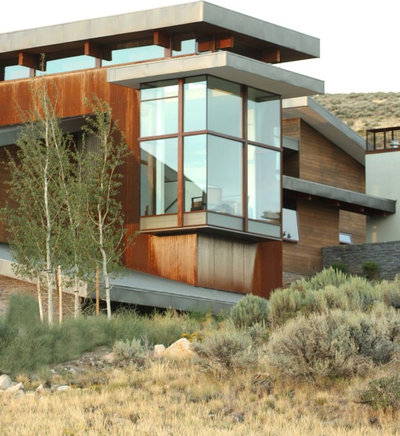
O plus L
Myth 1: Natives are drought-tolerant. I read too many articles that say one of the top benefits of using native plants is that they thrive in drought. That’s the sort of blanket statement that leads to a heap of trouble and wasted money.
The key is to always use the right plant in the right place. This means that a plant that grows in dry shade in the wild should be planted in dry shade in your garden, or that a plant that naturally grows in moist clay is placed in moist clay in your landscape. The result is lower garden maintenance, because you’ve matched the plant to its appropriate site conditions. You bet there are tons of natives that can take extended periods of drought, but research will show that it’s because they have long taproots or fine leaves or are native to arid or High Plains regions. If it’s not native to where you live and you’re not putting it in the right place, it probably won’t perform well.
How to Find the Right Native Plants for Your Yard
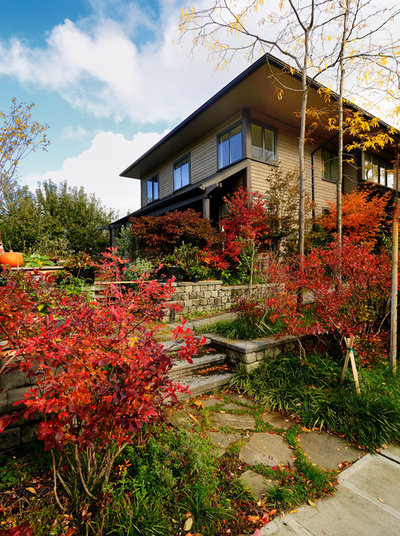
Studio Ectypos
Myth 2: Native to the U.S. is native everywhere in the U.S. We have well over 7,000 native plant species in the continental United States, but a plant that’s native to Florida probably won’t work well for your garden, or for the local wildlife, if you live in Maine.
Making things trickier is the fact that we also have seemingly countless ecological regions. Let’s take as an example the tallgrass prairie eco-region that runs down the middle of the country, roughly from Minnesota to Oklahoma. Many plants will grow throughout this region, but an aster in Texas is genetically adapted to bloom weeks earlier than one in Minnesota. Why does that matter? Many pollinators time their life cycles to bloom periods. If the two aren’t in sync, both the flower and the pollinator may miss out on reproducing.
Also be aware that a tree, shrub or perennial grown in a zone much warmer or cooler than where you live may not fare well in your garden. If you buy a tree that was raised in Georgia but you’re replanting it in Ohio, the tree may leaf out too early. A late freeze could do irreversible damage, depending on the plant.
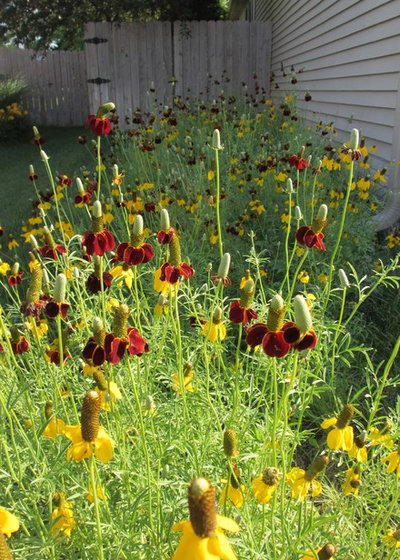
Benjamin Vogt / Monarch Gardens
Myth 3: Native plants are weedy and messy. I hear this a lot from architects, homeowners and even nursery managers. Yes, some native plants may spread aggressively, and certainly there are those that perform differently in a home garden. Take stiff goldenrod (
Solidago rigida). In the wild it grows erect at 2 to 3 feet tall, but in a more pampered garden setting it may top 5 feet, flop over and get in the way if planted too close to a path. This is why consulting with an expert is key if you’re doing a significant redesign. He or she will know how native plants perform in general, as well as how that performance changes in a more manicured landscape.
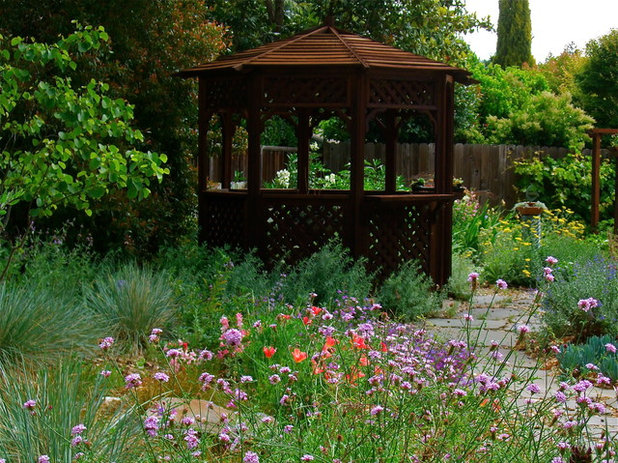
Edger Landscape Design
Myth 4: Natives require soil amendments. This might be my clients’ top worry. Usually, early on in our conversations, they’ll express concern about how native plants will perform in clay soil, because they’ve had to amend other areas for other specimens. This all goes back to matching the plant to the site. Many prairie flowers and grasses (many of whose ranges extend to the Atlantic, where I live) actually prefer clay soil. Why is that? A soil that’s too rich will often lead to plants that are overgrown, flop or otherwise perform poorly.
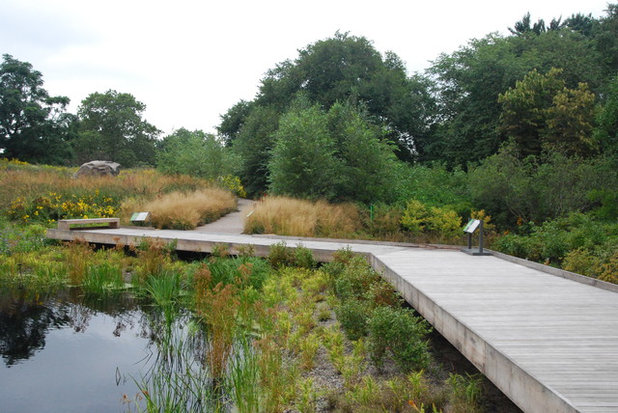
Paintbox Garden
Like any plant you see for sale, natives require a bit of research and knowledge in order to provide the full benefit of low-maintenance ecological design over the long term. It’s important to plant in like communities by including the other plants that grow alongside the specimen in the wild and understanding how they are mutually beneficial. You can learn from Web searches, experts and walks in the wild.
There are many resources available, and the upfront work you put in will not only teach you much about garden design and your local plant communities, but will also lead to a healthier and easier landscape down the road. That’s something every gardener wants.





